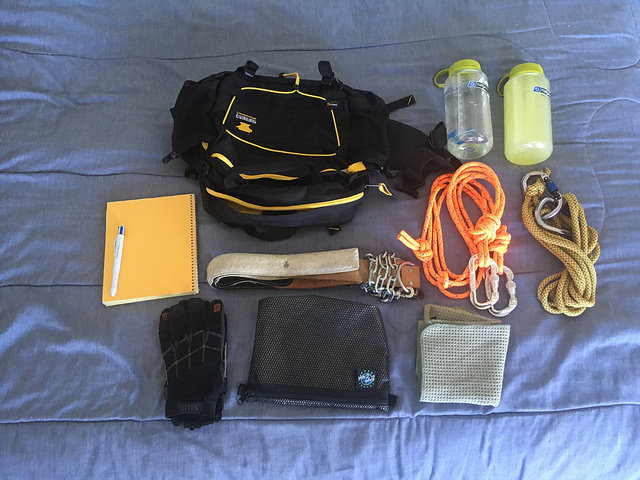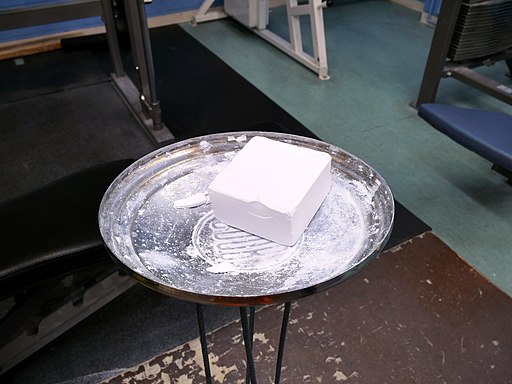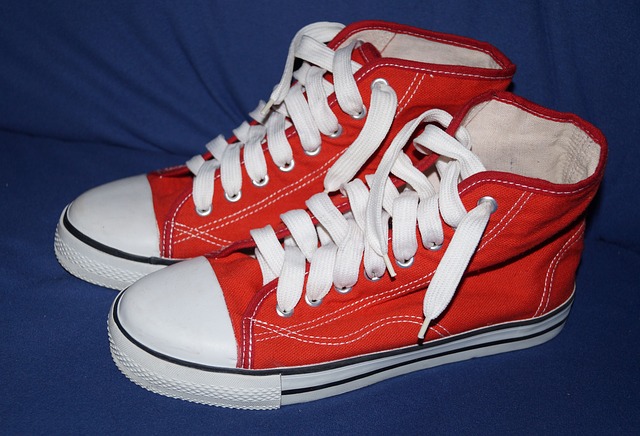Most Important 8 Accessories for powerlifters and weightlifters.
Many a time you might think that what type of guy who continues loads up the barbell with more than you could ever imagine, yet is not much bigger and stronger than you.
Sometimes accessories work so well that using it, it can improve overall your strength.
This article shows 8 most important accessories that you need or in future if you start powerlifting or weightlifting.
8 Accessories for powerlifters and weightlifters.
1. Chalk: first of all do you have a sweaty hand? weak grips and don't want to use any straps?
It's a Chalk or we can say 'Magnesium carbonate' is a very useful tool while you lifting raw.
when we applied it on our hand chalk soaks all moisture and sweat that we have and creates an element of friction between bar and hand.
There are different forms of chock available in the market such as in powder form or in balls or in blocks for less than a couple of dollars.
If you don't want to wear gloves when you can use chalk to improve your grip.
2. Gloves: There are some people out there who make fun of people who wear workout gloves.
I believe that workout gloves have many purposes than protecting your palm. it helps you to protect from calluses and cuts.
Gloves allow you to maintain a secure grip on the bar when moving around heavyweights.
Grip wise, having a layer of material between hand and bar can actually demand more grip in comparison to a bare hand since the material is free to move similar to the second layer of skin.
there are the aforementioned folds to compromise in the grip and the material (especially gloves with padding) adds a small amount to the girth of the bar which in turn demands more from the grip.
If you find yourself wiping off constantly, gloves might just be the trick.
3. Wrist Wraps: This gym accessory had been used for quite some time to help powerlifters to lift heavy than their PRs by improving grip.
If you use wrist wraps then you have no excuse to lift more. Wrist wraps will increase your forearms and grip strength eventually.
Wrist wraps prove useful for those who have weak and/or skinny wrists but only play a significant role where the wrists receive considerable stress.
Wrist wraps are formed of a piece of long cloth sewn onto itself to make a loop. the long end is passed through the loop and goes around your wrist.
Another end loop wrapped around the barbell so your hand over the top of the loose end to lock it into place.
4. Belts: Some people believe that weight belts are not needed, yet there are many cases where belts are very beneficial to use in order to lift heavy lifts.
I believe that if you have a strong core then you don't need to wear belts if you lifting weight less than 300lbs.
The belt allows for better lower back support as well as its increase intra-abdominal pressure to help core tight during movement such as deadlift.
The abdominals prevent the lumbar spine from swaying forwards under load.
Like I said if you want to improve your core strength you should lift the weight without belts.
belts will become an obstacle to improving your core strength.
5. Knee Sleeves: The knee sleeve is a tube of fabric which is pulled over the foot, up the leg, and onto the knee.
They are similar to knee wraps though their primary function is to heat the knee joint to allow it to work more efficiently, though there is an element of support - the degree of which depends upon the tightness and thickness of the sleeve.
It is said that if a lifter isn't comfortable enough to wear the sleeves throughout the entire session (regardless if they are used or not) then the sleeves are tight and therefore providing a considerable element of support.
Sleeves are more convenient since they don't need to be wrapped around the joint and they don't pose risk to the knees shooting out.
6. Knee Wraps: Knee wraps are fabric bandages worn around the knees to provide support to the lifter's knees.
When wrapped tightly they also create a spring when the legs are bent. This allows for the lifter to push out of the bottom position of the squat with slightly more ease.
Knee wraps should not be worn throughout a session unless they are being worn for injury support since it is best to encourage the knee joints to work within their natural capacity whilst allowing the muscles alone to bring the lifter out of the bottom position of lifts.
A knee wrap which is applied and worn incorrectly can result in the knee shooting out from between each layer which makes the knees lose support abruptly causes detrimental effect to the lift.
Knee wraps allow you to store energy in the elastic to help aid in the movement. For example, when squatting with knee wraps, in the bottom of the position, the stored energy in the tight wraps aid in helping your stand back up.
7. Shoes: It's common for people to walk into the gym with running shoes. you also have seen many well-known brands.
however, what some people don't realize is that not all shoes help them to lift heavy weights.
those with the soft and comfy shoes you wear around the town won't help when you're getting under the bar and loaded with a bunch of 45-pound plates.
Weightlifting shoes are built to be extremely rigid to provide a solid platform for exercises such as the squat.
This rigidness allows the bones of the lower leg and ankle to stay aligned to help produce more force through the movement. When a lifter uses a shoe that provides more cushioning, the lower leg muscles need to stabilize the ankle in order to produce a force great enough to complete the squatting movement.
These shoes also usually have an elevated heel of around one inch to help move the shins forward to allow your back to be put in a more upright position while squatting heavy.
Did you find this helpful? Do you have any questions or feedback? If You like my Article
Don't FORGET to Share With Your Friends.
Leave your thoughts in the comment section.










